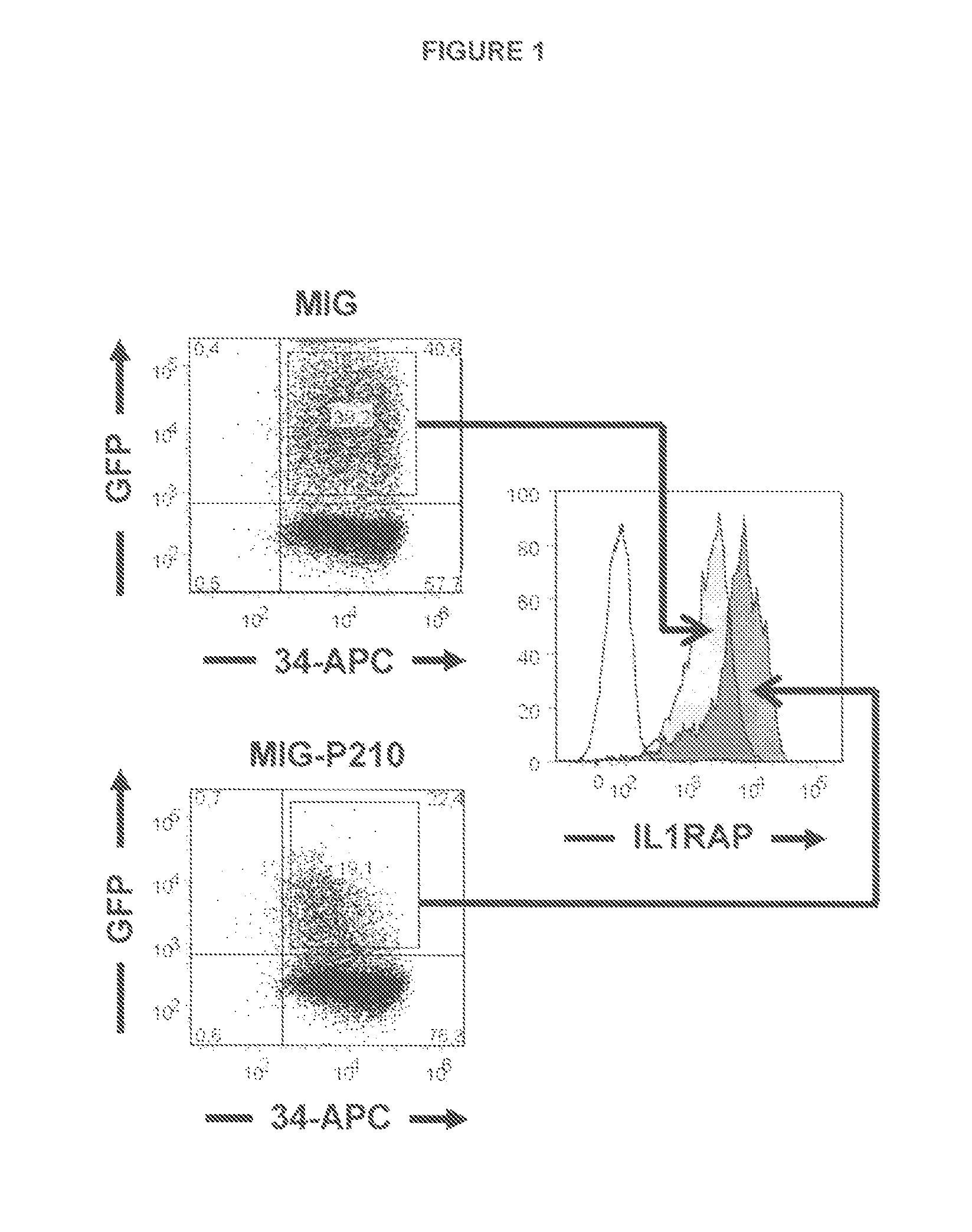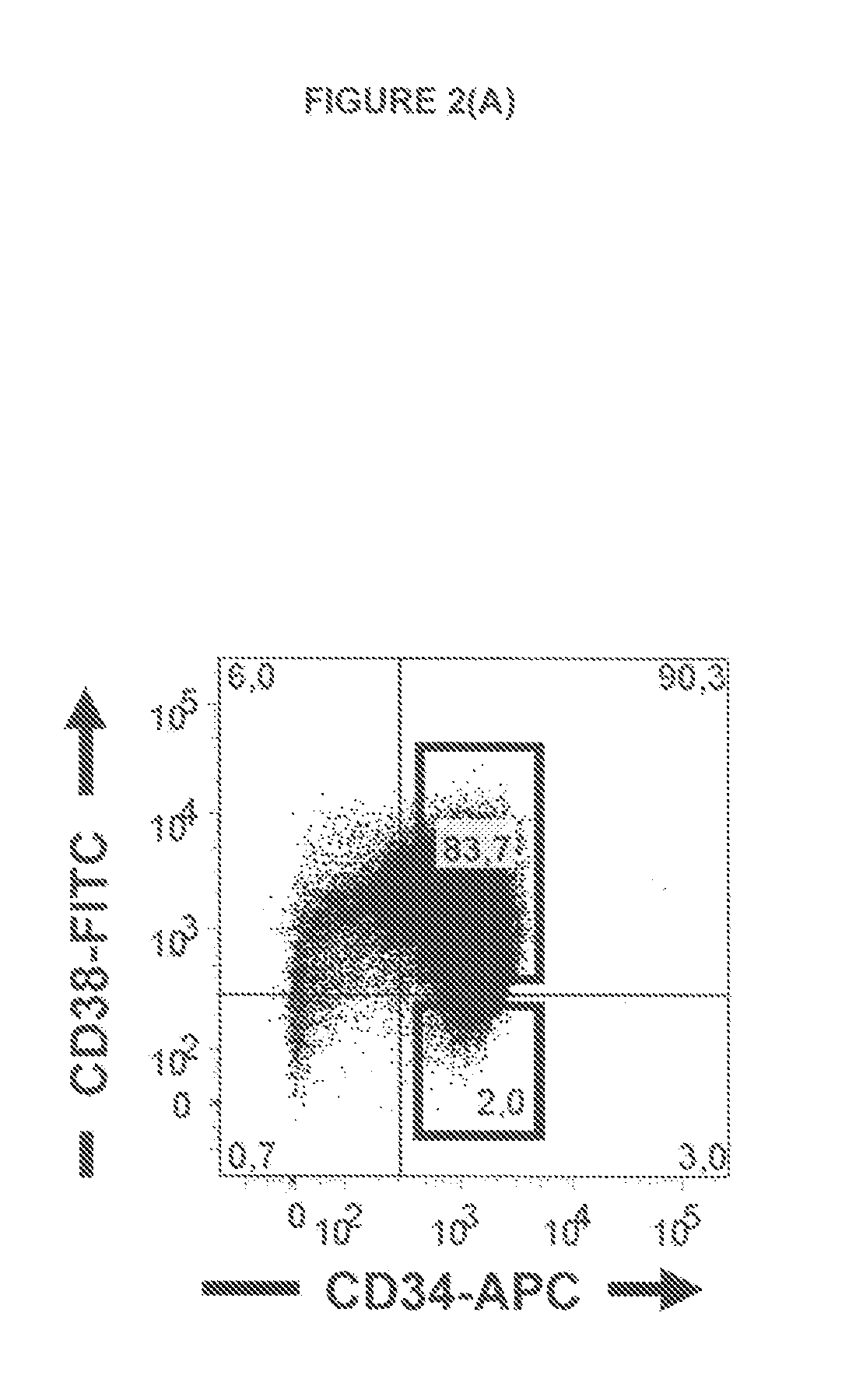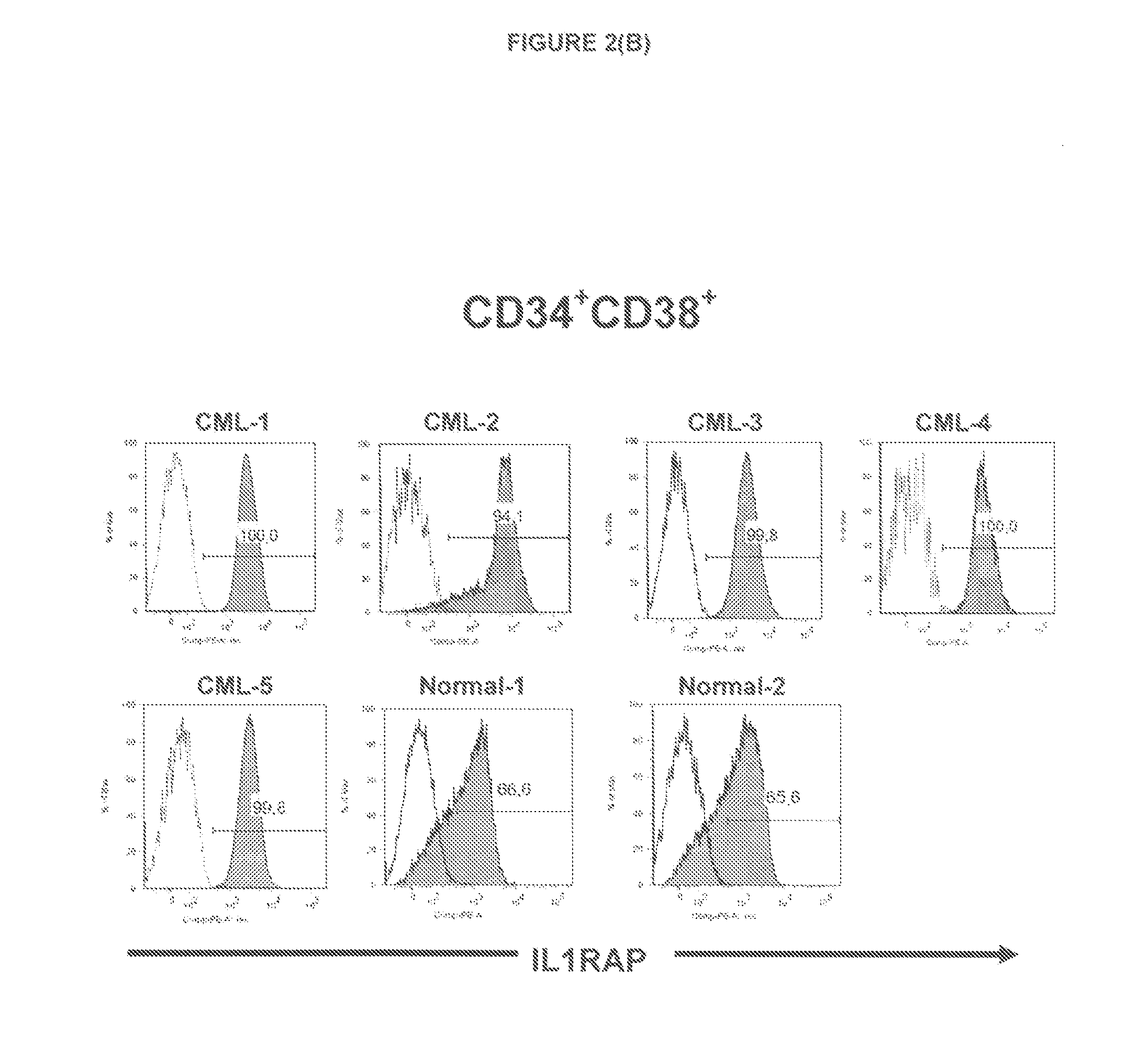Anti-IL1RAP Antibodies and Their Use for Treating Human
a technology of anti-il1rap and human body, which is applied in the field of anti-il1rap, can solve the problems of limiting the effectiveness of chemotherapy in solid tumours and treatment failure in over 90% of patients with metastatic diseas
- Summary
- Abstract
- Description
- Claims
- Application Information
AI Technical Summary
Benefits of technology
Problems solved by technology
Method used
Image
Examples
example 2
[0171]Antibody-Targeting of IL1RAP on Leukemia Stem and Progenitor Cells Cause Antibody-Dependent Cell-Mediated Cytotoxicity (ADCC)
[0172]Summary
[0173]Therapeutic strategies for leukemias aimed at achieving a permanent cure will require a full eradication of the leukemia stem cells. The leukemia stem cells, representing a small population of leukemic cells, have so far have been indistinguishable from normal hematopoietic stem cells (HSCs) using cell surface markers. A new concept for targeting leukemia stem cells would be to identify a cell surface biomarker for leukemia stem cells, to which future therapeutic antibodies could be directed (see Example 1).
[0174]In this study, we generate an anti-IL1RAP antibody and provide proof of concept that anti-IL1RAP antibodies targeting chronic myeloid leukemia (CML) stem cells, Acute myeloid leukaemia (AML) stem cells, and Acute lymphoblastic leukaemia (ALL) stem cells can be used to induce antibody-dependent-cell-mediated cytotoxicity (ADCC)...
example 3
ession on Solid Tumours
[0204]Materials and Methods
[0205]Using the Oncomine search engine (www.oncomine.org), we identified all data sets containing various cell lines established from different tumour types. The largest data set identified was the data set “Wooster Cell Line2”. This data set contains 308 cancer cell lines, representing 20 different tumour types. The query term used was “IL1RAP” with the reporter setting “205277_at”.
[0206]Results
[0207]In total, we identified 17 different solid tumour types that were represented by cell lines meeting our criteria for an upregulated expression of IL1RAP (see Table 1). The percentage of cell lines within each tumour type showing upregulated IL1RAP ranged from 4% (colorectal cancer) to 67% (melanoma, prostate cancer). Among the tumour types, we identified some of the most common cancer entities in humans, including malignancies from breast, colon, lung, prostate and bladder. In addition, some tumour types associated with poor clinical ou...
example 4
—Analysis of IL1RAP Expression on Human Cell Lines by Flow Cytometry
[0211]Materials and Methods
[0212]Reagents[0213]Fc-receptor blockers from BD Biosciences[0214]anti-human CD16 (cat no 555404)[0215]anti-human CD32 (cat no 555447)[0216]APC-mouse IgG1 k Isotype control (cat no 555751) from BD Biosciences[0217]Anti-human IL-1 RAcP / IL-1 R3-APC (cat no FAB676A) from R&D system.
[0218]Cell Lines
TABLE 2Cell lineDescriptionATCC / DSMZ Catalog No.KG-1Human acute myeloidACC 14leukemia (used as anegative control)KU-812Human chronic myeloidACC 378leukemia in myeloid blastcrisis (used as a positivecontrol)NCI-H2228Lung AdenocarcinomaCRL-5935NCI-H716Colon CancerCCL-251HCC1954Breast Ductal CarcinomaCRL-2338SRLymphomaCRL-2262OV-90Ovarian AdenocarcinomaCRL-11732COLO 829Malignant MelanomaCRL-1974SH-4MelanomaCRL-7724SW 1783AstrocytomaHTB-13
[0219]The cell lines were cultured under standard conditions in medium recommended by the suppliers.
[0220]FACS Analysis
[0221]Cells (350 000) were resuspended in 2 ml F...
PUM
| Property | Measurement | Unit |
|---|---|---|
| Cytotoxicity | aaaaa | aaaaa |
| Chemotherapeutic properties | aaaaa | aaaaa |
Abstract
Description
Claims
Application Information
 Login to View More
Login to View More - R&D
- Intellectual Property
- Life Sciences
- Materials
- Tech Scout
- Unparalleled Data Quality
- Higher Quality Content
- 60% Fewer Hallucinations
Browse by: Latest US Patents, China's latest patents, Technical Efficacy Thesaurus, Application Domain, Technology Topic, Popular Technical Reports.
© 2025 PatSnap. All rights reserved.Legal|Privacy policy|Modern Slavery Act Transparency Statement|Sitemap|About US| Contact US: help@patsnap.com



